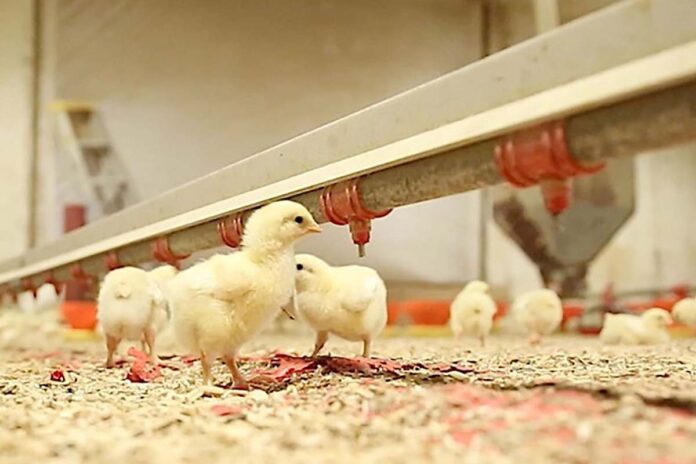
In response to ILTV outbreaks, live vaccines are typically administered at 7-14 days of age in drinking water via nipple drinkers which may not provide optimal contact with susceptible tissues. The efficacy of vaccination is not routinely assessed. As part of a series of experiments investigating the kinetics of ILT virus (ILTV) in meat chickens after water vaccination via nipple drinkers, we investigated different sampling methods for assessing ILTV genome copy number (GC) by qPCR to assess flock status.
The study included 8 flocks (sheds) of meat chickens in Sydney and surrounding areas. The flocks were vaccinated with the Serva strain of ILT vaccine in drinking water at 7-14 days of age (doa) according to the normal protocol for the farm. Individual tracheal swabs from 40-
70 birds, and 2-6 dust samples from settle plates were collected at 4, 7-8, 12-13 and 25-26 days post vaccination (dpv). In some flocks, a subset of 10 birds from which the tracheal swabs (TS) were collected also had cloacal (ClS), conjunctival (CoS) and/or choanal cleft (CCS) swabs collected and in one flock, a faecal sample was collected. ILTV GC has been reported at high levels in faeces and dust under experimental conditions. DNA was extracted from the various samples and subjected to the ILTV specific qPCR to determine GC described by Roy et al. (2015).
ILTV GC was readily detectable in all sample types but in faeces this was sensitive to the method of DNA extraction. There was wide variation in the proportions of TS positive in the post vaccination period with poor initial “take” of vaccine in 3 of the 8 flocks. This poor take was reflected in low ILTV GC in dust samples at 7-8 dpv suggesting that this could be a useful population level measure of vaccine take. With regard to individual bird measures, CCS provided very similar results to TS both in terms of numbers of birds positive (80% concordance) and in terms of viral load (Linear regression R2 0.58, P<0.001). Virus took longer to appear in CoS but were detectable for longer. ClS and faeces had lower sensitivity of detection of infection, but this was confounded by extraction method.
The results of this study indicate that CCS are a more practical, and less invasive method of detecting ILTV in individual chickens than TS. CoS are also less invasive than TS but risk eye injury and have reduced sensitivity at 4 dpv. Faeces are more difficult to collect and they and ClS and have drawbacks associated with extraction method. At a population level, dust samples offer promise as a marker of vaccination success, being able to differentiate in this study between farms with poor and adequate vaccination takes. Being able to assess this in a single, stable, easily collected and transported sample at 7-8 dpv makes assessment of vaccination take a practical consideration in commercial meat chicken flocks. Testing the utility of these alternative measurements under a wider range of conditions is warranted.
References are available on request
From the Proceeding of the 2019 Australian Poultry Science Symposium

















